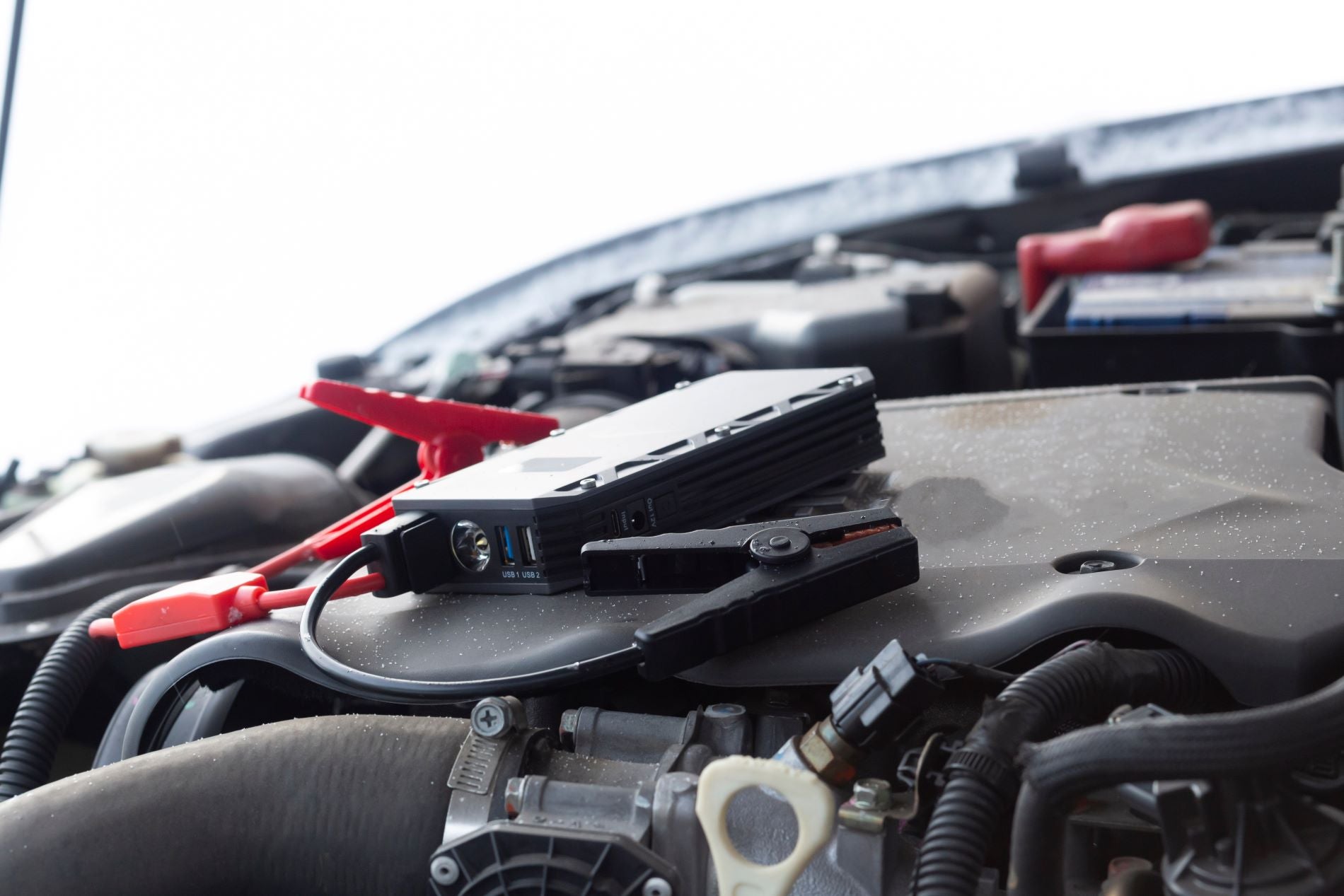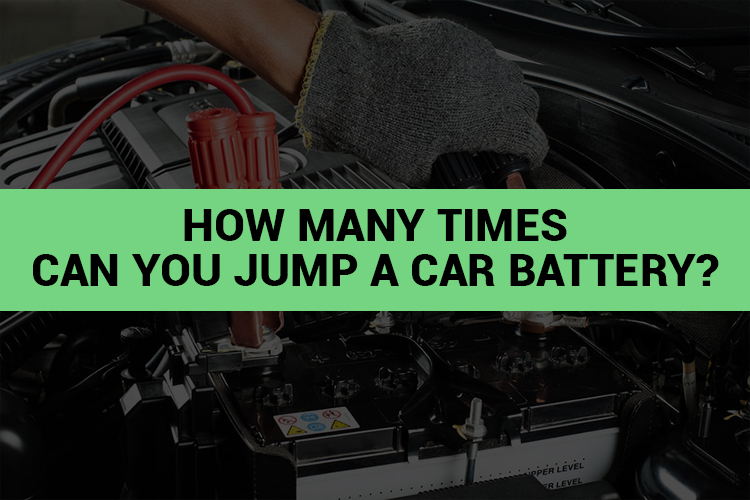You can jump a car battery three to four times in a day, but it’s best to have a professional inspect it after the second jump to prevent damage. Jump-starting a car’s battery too many times in a day can strain the vehicle’s electrical system and reduce the battery’s lifespan.
It’s essential to jump a car battery within reason and have it properly checked and replaced if necessary to avoid any further issues. Jump-starting a car battery can be a temporary solution but should not be relied upon for ongoing use.
Here’s everything you need to know about jump-starting a car’s battery and ensuring the proper care and maintenance of your vehicle’s electrical system.

Credit: www.reddit.com
Factors Affecting Jumping Car Batteries
Age Of The Battery
The older the battery, the harder it may be to jump start.
Battery Capacity
Low battery capacity can lead to unsuccessful jump starts.
Understanding these factors is crucial when attempting to jump start a car battery.
Frequency Of Jump Starting
A car battery can typically be jump-started multiple times, but it’s important to address the underlying issue causing the battery to die. It’s best to consult a professional to diagnose and fix the problem.
Short-term Vs. Long-term Impacts
Jump starting a car battery is a common occurrence for many vehicle owners. But have you ever wondered how frequently you can actually jump start your car without causing any damage? When it comes to the frequency of jump starting, there are both short-term and long-term impacts to consider.
Short-term Impacts
Jump starting your car battery too frequently in a short period can have some immediate consequences. One of the main risks is the potential for damaging the electrical system of your vehicle. This happens when the sudden surge of power during the jump start overwhelms the delicate electronics, leading to fried circuits and blown fuses. Additionally, repeated jump starts can put excessive strain on your battery cables, causing them to overheat and potentially melt.
Moreover, the continuous use of jumper cables can generate excess heat, increasing the risk of fire if not handled properly. Furthermore, frequent jump starting may also impact the alternator, which is responsible for recharging the battery. The strain on the alternator from repeated jump starts can lead to premature failure, resulting in less effective charging and potentially leaving you stranded in the future.
It’s worth noting that the short-term impacts of jump starting are more likely to occur if you don’t address the underlying issue that’s causing your battery to repeatedly die. If you find yourself jump starting your car frequently, it’s crucial to identify the root cause and deal with it accordingly.
Long-term Impacts
Jump starting your car battery too many times over an extended period can have lasting effects on its overall lifespan. While occasional jump starts may not cause significant damage in the long run, repeated jump starts can gradually degrade your battery’s capacity and performance. Each jump start puts a strain on the battery, which can lead to decreased efficiency and a shorter overall lifespan.
Moreover, if you rely too heavily on jump starts rather than addressing the underlying battery issues, you may neglect necessary maintenance and replacement, leading to further deterioration. Ignoring the warning signs and repeatedly jump starting your battery can ultimately render it completely unresponsive, requiring a costly replacement.
In conclusion, while jump starting a car battery occasionally is generally safe, it’s crucial to be mindful of the frequency. Excessive jump starts over a short period can lead to immediate damage to your vehicle’s electrical system, while repeated jump starts over a long period can negatively impact the battery’s lifespan. If you find yourself frequently needing to jump start your car, it’s recommended to consult a qualified mechanic to identify and address any underlying issues.
Proper Jump Starting Techniques
Using Jumper Cables
To jump start a car battery, you will need a set of jumper cables. Jumper cables are insulated, heavy-duty cables with clips at each end. They provide a temporary connection between two vehicles, so electricity can flow from the functional battery to the dead one.
Connecting The Cables
When connecting the jumper cables, it’s essential to follow a specific sequence. Here’s a simple step-by-step guide to help you through the process:
- Position the working vehicle so that the engines are close, but they are not touching.
- Turn off the ignition for both vehicles, engage the parking brakes, and ensure the transmissions are in neutral or park.
- Identify the positive and negative terminals on the batteries; the positive terminal is usually marked with a plus sign (+), while the negative terminal has a minus sign (-).
- First, attach one end of the red (positive) jumper cable to the positive terminal of the dead battery.
- Next, connect the other end of the red (positive) jumper cable to the positive terminal of the working battery.
- Then, attach one end of the black (negative) jumper cable to the negative terminal of the working battery.
- Finally, secure the other end of the black (negative) jumper cable to an unpainted metal surface on the engine block of the dead car. This provides a ground and helps prevent sparks near the battery.

Credit: www.daytonamercedes.com
When To Consider Replacing The Battery
Signs Of A Failing Battery
A car’s battery plays a crucial role in powering the vehicle’s electrical components. Over time, however, it can begin to lose its effectiveness, leading to a range of issues. Recognizing the signs of a failing battery is important for proper vehicle maintenance and to avoid getting stranded with a dead battery. Some common signs indicating a failing battery include:
- Dim or flickering headlights.
- Difficulty starting the engine, often accompanied by a slow cranking sound.
- Electrical issues such as malfunctioning power windows or radio.
- An aging battery that is over 3 years old.
Consulting A Professional
When you begin to notice any of the aforementioned signs, it is advisable to consult a professional mechanic or auto technician to assess the condition of your car’s battery. A professional will conduct a battery load test to determine its overall health. This test will assess the battery’s ability to supply adequate electrical power and identify whether it needs to be recharged or replaced. Seeking professional advice can ensure that you address the issue promptly, preventing potential breakdowns and expensive repairs down the line.
Preventive Maintenance For Car Batteries
Protect your car battery by implementing preventive maintenance measures. This can help extend the battery’s lifespan and reduce the frequency of jump starts. It’s important to note that excessive jump-starts can strain the battery and lead to decreased performance and reliability over time.
Preventing car battery issues is crucial to keep your vehicle running smoothly. By implementing regular inspections and adopting good battery maintenance practices, you can extend the lifespan of your battery and reduce the likelihood of being left stranded with a dead car battery.
Regular Inspections
Regular inspections are essential to catch any signs of battery deterioration and prevent potential breakdowns. It is recommended to visually inspect your car battery at least once every three months. During these inspections, check for any signs of corrosion on the battery terminals or cables. Corrosion can inhibit the flow of electricity, causing your battery to work harder and reducing its lifespan. If you notice any corrosion, it can be easily removed using a mixture of baking soda and water. Scrub the affected areas gently with a toothbrush and rinse with clean water.
In addition to checking for corrosion, make sure to inspect the battery casing for any cracks or leaks. Cracks or leaks can lead to acid leakage, causing damage to other components of your vehicle. If you notice any cracks or leaks, it’s important to replace the battery immediately.
Keeping The Battery Charged
A well-maintained battery should always be kept charged to ensure optimal performance. If your vehicle is idle for an extended period, consider using a battery maintainer or trickle charger to keep the battery at an appropriate charge level. This helps to prevent the battery from discharging and losing its capacity. Additionally, make sure to avoid frequently starting your vehicle without allowing enough time for the battery to recharge. This can cause strain on the battery, ultimately reducing its overall lifespan.
It’s important to regularly check the battery voltage to ensure it is within the appropriate range. A voltage reading below 11.85 volts indicates that your battery is losing charge and may need to be replaced. On the other hand, a voltage reading below 11 volts may mean your battery is already fully discharged and no longer salvageable.
Proper preventive maintenance for your car battery can save you from unexpected breakdowns. Incorporating regular inspections and keeping the battery charged will go a long way in preserving the life of your battery and keeping your vehicle running smoothly.

Credit: www.carpages.ca
Alternative Solutions To Jump Starting
When it comes to alternative solutions for jump starting a car battery, there are options available beyond traditional methods.
Portable Jump Starters
A portable jump starter is a handy device that can quickly revive a dead battery without the need for another vehicle.
These compact tools are easy to use and can be kept in your car for emergencies, providing a convenient solution.
Simply connect the jump starter to the battery following the instructions, and you’ll be back on the road in no time.
Calling For Roadside Assistance
If you are unable to jump start your car on your own, calling for roadside assistance is a reliable option.
Roadside assistance services can dispatch a professional to help jump start your car or offer other solutions if needed.
They have the expertise and tools required to safely get your vehicle running again, ensuring peace of mind for drivers.
Common Mistakes To Avoid
Jump-starting a car battery is a common task, but there are some common mistakes that you should avoid to ensure a successful process and prevent any damage.
Incorrect Cable Connections
- Ensure red cable to positive terminal, black cable to negative terminal.
- Mixing up cable connections can cause electrical damage.
Overlooking Battery Health
- Check battery health before jump-starting.
- An old or damaged battery may not hold a charge.
Conclusion
To wrap up, it’s crucial to understand the limitations of jump-starting a car battery. While it can be a lifesaver in emergencies, it’s recommended to jump a car battery no more than three times in a row. Frequent jump starts can cause damage to the electrical components and shorten the battery’s lifespan.
Regular maintenance, such as checking the battery’s condition and ensuring a proper charging system, is key to avoiding these situations. By being mindful of these guidelines, you can safely and effectively jump-start a car battery when needed.


